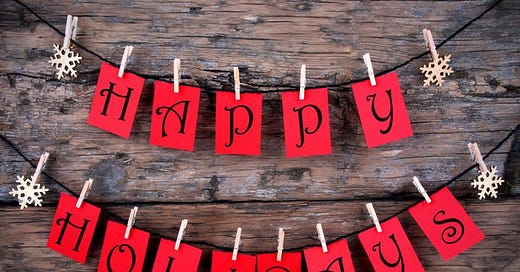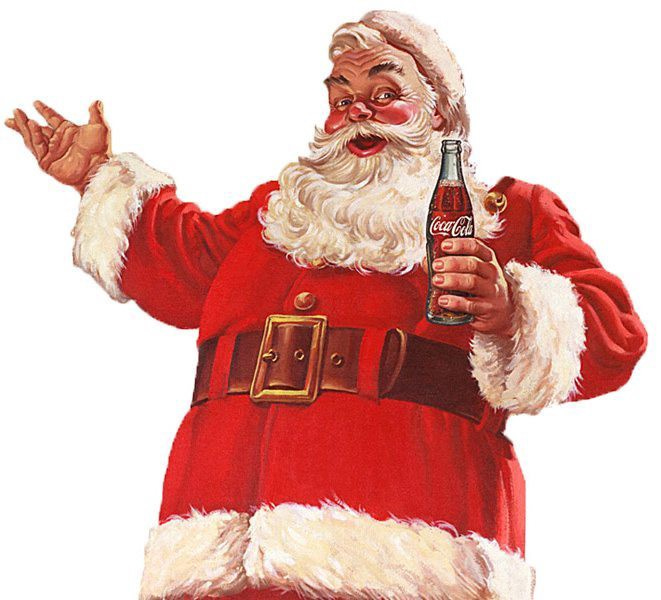Let’s Enjoy, Not Conflate, Our Holidays
There is More Than One Holiday This Season!
Here in the United States, there are several holidays during the fall/winter season, and Christmas is only one of those holidays, albeit the largest. I love the diversity of cultures in America, and I love the diversity of cultural holidays.
The official “Holiday Season” generally starts at the end of October with Halloween and lasts through January 1st, New Year’s Day, although the date for Christmas in the Orthodox Church is usually January 7 (using the “Julian calendar” instead of the “Gregorian Calendar). There are many people (and companies) who feel that Christmas is the only holiday that really counts, and often talking about and selling for Christmas starts very early.
The commonly (and less commonly) celebrated religious and secular U.S. holidays in the fall and winter include:
Halloween: October 31
All Saints’ Day: November 1
Dias de la Muertas (Mexican Day of the Dead): November 1–2
Diwali (Indian Festival of Lights) October/November (the actual dates vary)
Thanksgiving: 4th Thursday of November
Chanukah (Jewish Festival of Lights): December (the actual date varies)
Christmas: December 25
Kwanzaa: December 26 — January 1
New Year’s Eve: December 31
New Year’s Day: January 1
(The Islamic holiday of the holy month of Ramadan, which is a commemoration of the Prophet Muhammad’s first revelation, follows the lunar calendar and occurs at different times during the Gregorian calendar year. Ramadan is celebrated during the ninth month of the Islamic calendar, which sometimes occurs in the fall/winter, depending on the Islamic calendar.)
How did Christmas Transform to How It Is Celebrated Today?
In the West, Christmas is both a religious and a secular holiday. The date to celebrate the birth of Jesus was set as December 25 after many centuries of discussion and for many reasons, although only two of the Gospels even mention his birth, and nowhere in the New Testament are Christians told to celebrate the event. Here in America, the Puritans did not celebrate Christmas at all, and the celebrating of Jesus’ birth, also called the Nativity, in many churches is usually completely (or almost completely) separate from the secular celebration. Religious Christmas celebrations, traditions, and decorations developed over the last several centuries, and vary from country to country and culture to culture.
The secular celebration of Christmas, particularly in the West, actually started with Saint Nicholas, which was based on the gifts given to the baby Jesus by the Magi. Saint Nicholas is known as Sinterklass in the Netherlands, as is widely considered to be the first “Santa Claus.” Saint Nicholas was known for his care for children, charity, and gift-giving. The Feast Day of St. Nicholas is observed on December 6 in many countries, separate from Christmas Day.
The modern-day depiction of “Santa Claus” is commonly thought to have evolved in the early 19th century from Sinterklass in New York, which was originally settled by the Dutch and called “New Amsterdam.” In the first years of the 1800s, Sinterklass was shown dressed in the bishop’s robes of St. Nicholas. However, in 1863, the German-American cartoonist Thomas Nast, an immigrant and refugee, started drawing Santa Claus as the “Jolly Ol’ St. Nick” that we know today, based on the English “Father Christmas” portrayals.
From the 1880s through the 1930s, advertisers standardized the image of Santa Claus we still use today. Coca-Cola hired artist Haddon Sundblom to draw Santa holding a coke and accentuating the bright red suit, black belt and boots, white beard, and sparkling eyes and smile. Sundblom drew inspiration for his depiction from the famous 1822 poem by Clement Clark Moore called “A Visit from St. Nicholas,” which is also known as “Twas the Night Before Christmas.”
More Important and Less Important
2019–2020: One Year Latermedium.com
So Many Holidays, So Little Time
Because the secular Christmas holiday, which started out with giving just a few gifts based on the Biblical Nativity story, has morphed into a more than huge marketing and sales behemoth, “Christmas” seems to start earlier and earlier. There are Christmas movies and Christmas sales in July. In the recent past, people bought Christmas gifts early only for friends and family members who lived overseas, just because of the time it took to send packages that far by mail.
Now, however, Christmas seems to last most of the year. “Black Friday” sales often start in September. Christmas movies on the Hallmark Channels run 24/7 starting the 3rd week in October. The push to buy, buy, buy is constant and pervasive, and by the time December 25th finally gets here, it almost seems anti-climatic.
But not in the Owens household. Here we celebrate ONE HOLIDAY AT A TIME. When I was a child, and when my kids were little, we got all dressed up and celebrated Halloween. Now that my children are grown, I do not celebrate Halloween anymore, preferring instead to celebrate my birthday on October 29th.
At the beginning of November, I start thinking about Thanksgiving, and decorating the house in fall colors, and planning my menu. All of my food shopping and most of my cooking is completed before the actual Thanksgiving Day, which I enjoy with my large extended family for the long Wednesday — Sunday weekend (except for this year of 2020 because of COVID).
After Thanksgiving is over is when I start my decorating for Christmas so that it is done by December 1st, which is the soonest I turn on the lights. I plan my shopping, but the actual shopping does not start for us until about the 3rd week of December. Everything for fall/Thanksgiving is taken down and put away, and everything for winter/Christmas is set up.
I actually enjoy barreling through the shopping crowds and the store decorations and displays (pre-COVID, of course), and I enjoy the decorating and gift wrapping, etc. In our large extended family, we do “round-robin” gift-giving by picking a name out of the hat and one adult buys for the entire family whose name was picked. It’s a lot of fun, but we don’t go crazy with gift-giving; we never have.
On December 26, I set up my home for the African-American cultural holiday of Kwanzaa, which is celebrated for seven days from December 26 through January 1. I also enjoy New Year’s Eve and New Year’s Day, so I guess I do celebrate those holidays at the same time, but only because they actually overlap on the calendar.
Yes, Christmas is usually the biggest holiday for most people, but for me, it is only one of several wonderful holidays I celebrate. I like to take the time to prepare for and enjoy one holiday at a time. To me, all of this focus on Christmas, especially on the over-emphasis of buying much more than most will ever need, spoils both the religious and secular meanings of the holiday.
What are your thoughts about the mixing of the holidays and the uber-focus on Christmas? I’d love to hear from you in the comments.
About Me
I am a native Detroiter, a wife, mother, grandmother, solopreneur, and homeowner, and I am recently retired and loving it. I would love for you to follow me on my personal Facebook and on my personal Instagram. Any opinions expressed in this publication are my own.
I invite you to read the stories in my Medium publications: Pam’s Passions, Your Business Your Brand Creatively, and Detroit Ink Publishing.





